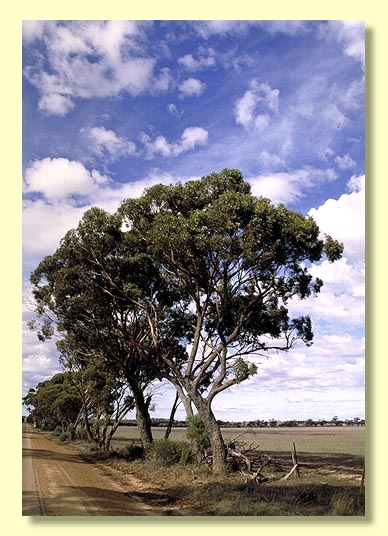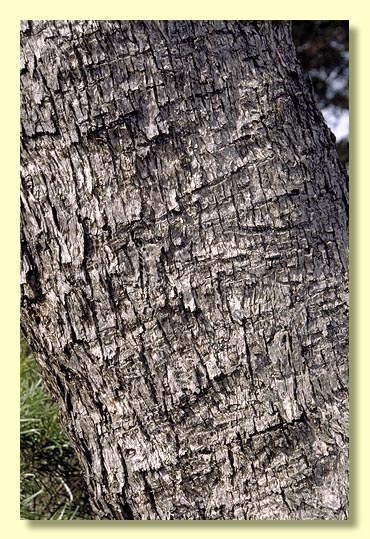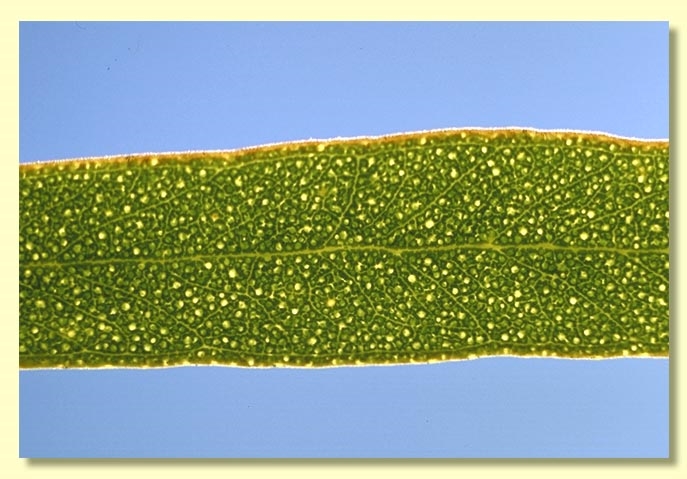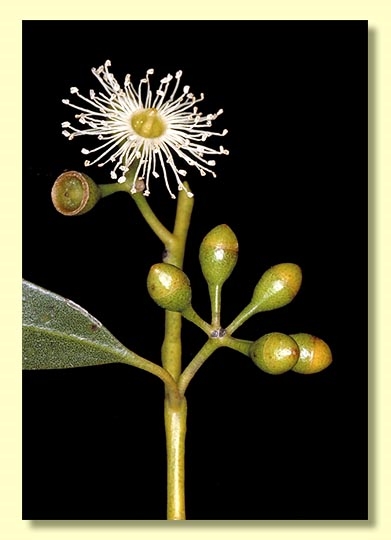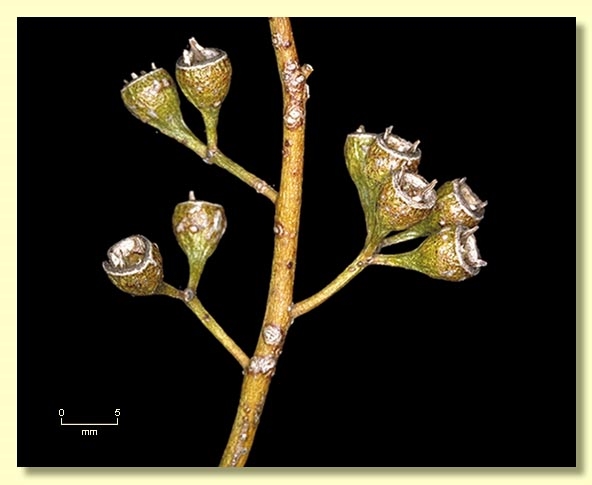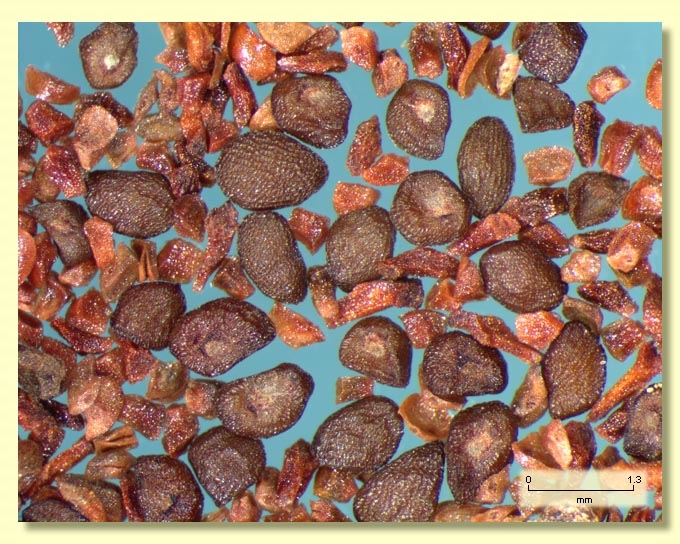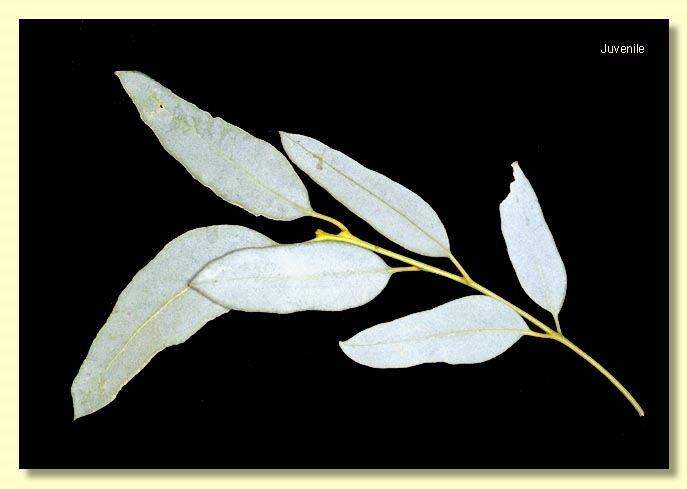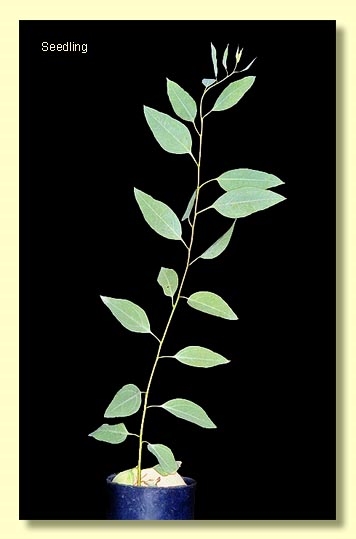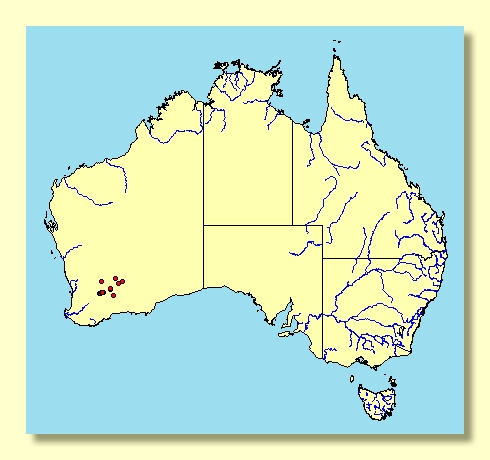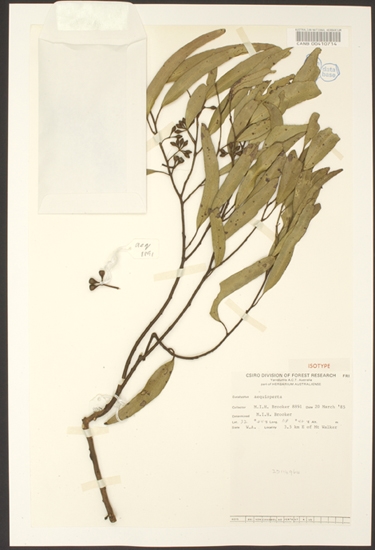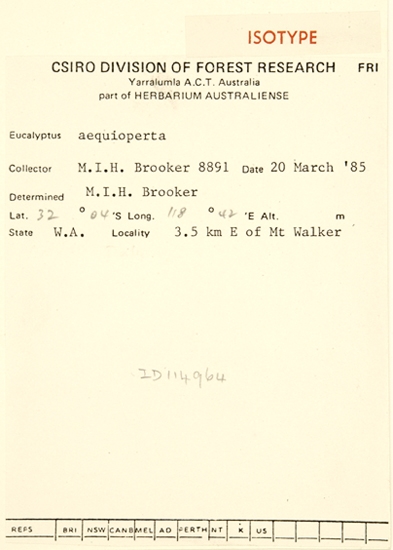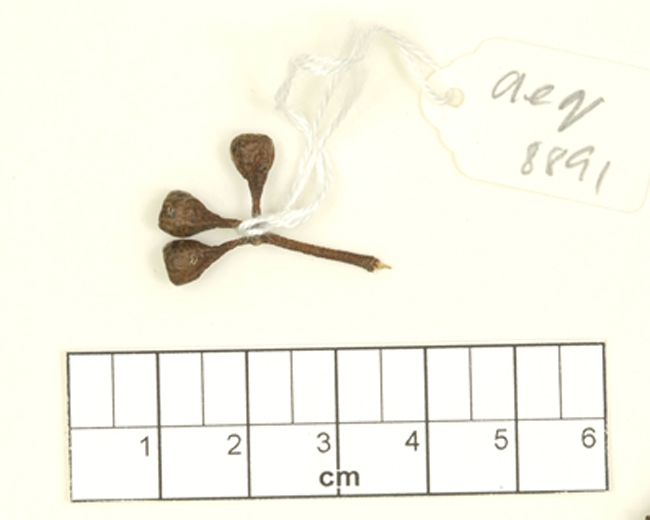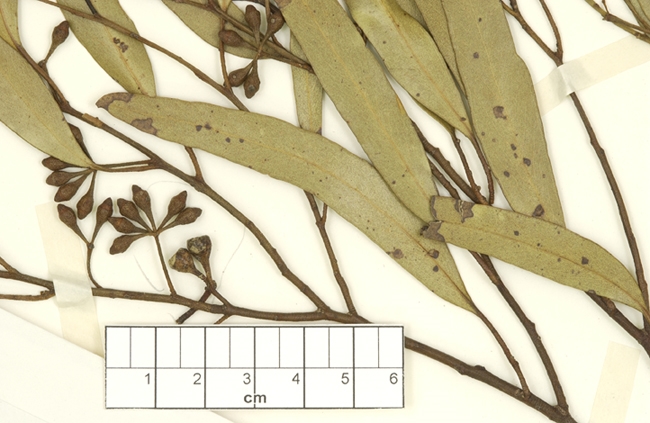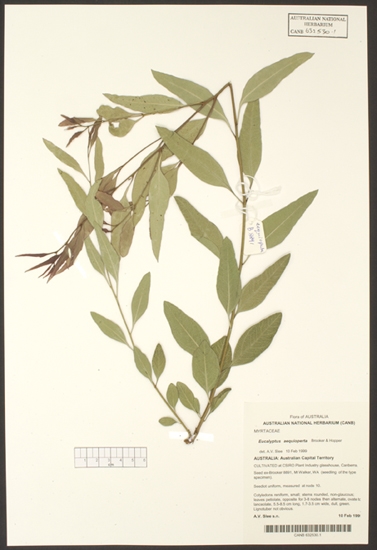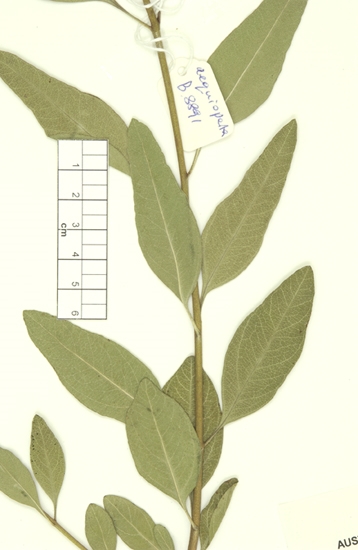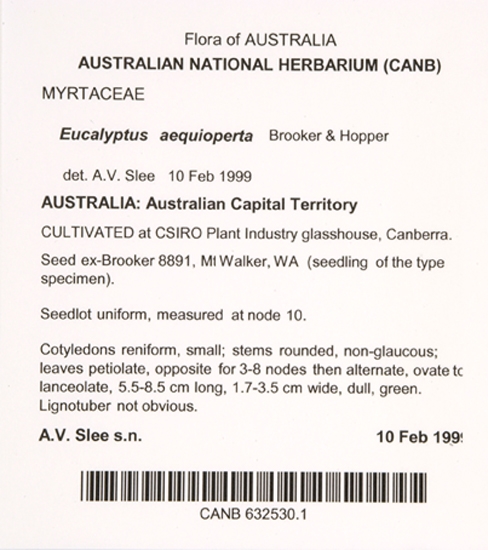Eucalyptus | Symphyomyrtus | Dumaria | Ovulares
Euclid - Online edition
Eucalyptus aequioperta
Bark rough, dark grey, fairly firm and scaly or flaky to fibrous for about half of to all of trunk and large limbs to ca 15 cm diameter, becoming slightly tessellated on older trees, smooth above, dull pinkish grey to whitish.
Branchlets with small oil glands in the pith.
Juvenile growth (coppice or field seedlings to 50 cm): stems rounded in cross-section, slightly glaucous; juvenile leaves always petiolate, opposite at lowest nodes but soon alternate, ovate to elliptic to lanceolate, 2–9 cm long, 0.8–2.5 cm wide, bluish to glaucous, becoming glossy, green as a sapling.
Adult leaves alternate, petioles 0.8–1.7 cm long; blade linear to narrowly lanceolate or falcate, 6–11 cm long, 0.6–1.2 cm wide, base tapering to petiole, margin entire, apex pointed, concolorous, glossy, green, side-veins at an acute or wider angle to midrib, reticulation moderate to dense, intramarginal vein close to margin, oil glands mostly intersectional.
Inflorescence axillary unbranched, peduncles 0.5–1.5 cm long, buds 9 to 15 per umbel, pedicellate, pedicels 0.2–0.5 cm long. Mature buds ovoid with operculum equal to or narrower than hypanthium at the join (0.5–0.7 cm long, 0.25–0.35 cm wide), scar present, operculum bluntly to acutely conical (0.15–0.3 cm long), stamens inflexed, anthers oblong, versatile, dorsifixed, dehiscing by longitudinal slits, style stout, long and straight, stigma blunt to slightly rounded, locules 3(4), the placentae each with 4 vertical rows of ovules. Flowers white.
Fruit pedicellate (pedicels 0.2–0.5 cm long), shortly barrel-shaped to obconical tending to truncate-globose, 0.4–0.5 cm long, 0.4–0.6 cm wide, disc descending vertically, valves 3(4), near rim level.
Seeds mid-brown, 0.8–1.5 mm long, flattened ovoid, dorsal surface shallowly and clearly reticulate, hilum ventral.
Cultivated seedlings (measured at ca node 10): cotyledons reniform; stems rounded in cross-section; leaves always petiolate, opposite for 3 to 8 nodes then alternate, ovate to lanceolate, 4.5–10 cm long, 1.3–3.5 cm wide, dull, concolorous, green.
Flowering has been recorded in May.
A rough-barked tree or mallee endemic to Western Australia occurring in the wheatbelt and goldfields in the area bounded by Corrigin, Southern Cross, Forrestania Cross-roads and Coolgardie, but its distribution is not well known and may extend as far east as Lake Minigwal.
Eucalyptus aequioperta belongs in Eucalyptus subgenus Symphyomyrtus section Dumaria because the buds have two opercula, stamens are strongly inflexed, ovules are in 4 rows on the placentae and cotyledons are reniform. Within section Dumaria it belongs to a small sub-group of nine closely related species which are together called series Ovulares. The series is further diagnosed by glandular pith, cuboid anthers, and seeds with a brown shallowly and clearly reticulate dorsal seedcoat.
Some of the species in series Ovulares are completely smooth-barked (E. cyclostoma, E. cylindrocarpa, E. exigua and smaller plants of E. oraria) and therefore easily distinguished, while others (E. aequioperta, E. baudiniana, E. comitae-vallis, E. myriadena and E. ovularis) have rough bark over at least part of the stems. E. aequioperta has small ovoid buds which in some populations are "egg-in-eggcup"-like. Its nearest relative geographically and morphologically is E. ovularis which has buds distinctly widest at the base, and a more southerly distribution between Norseman and Grass Patch and eastwards towards Mt Ragged. E. myriadena differs by having more cylindrical buds and more extensive rough bark than E. aequioperta.

